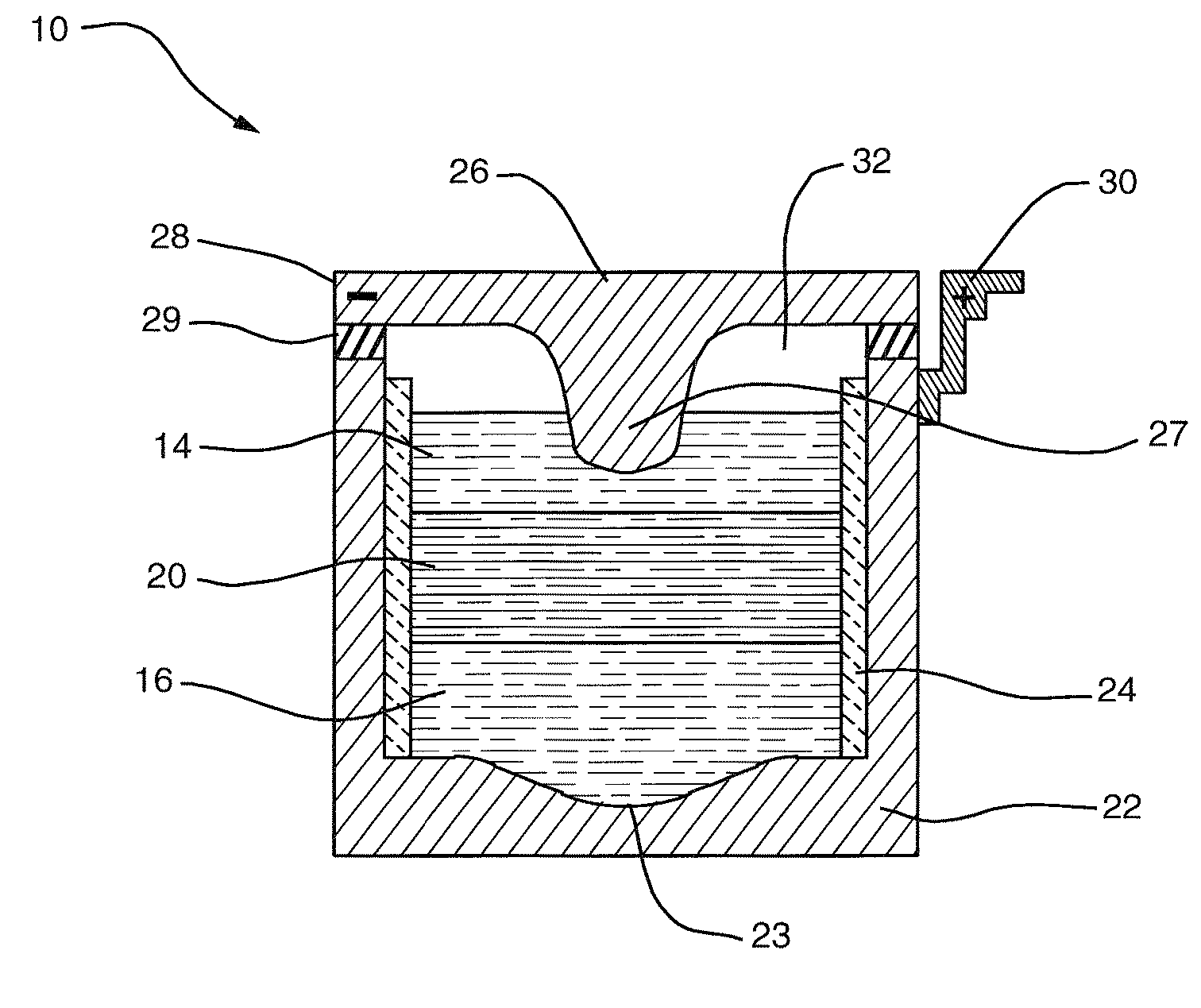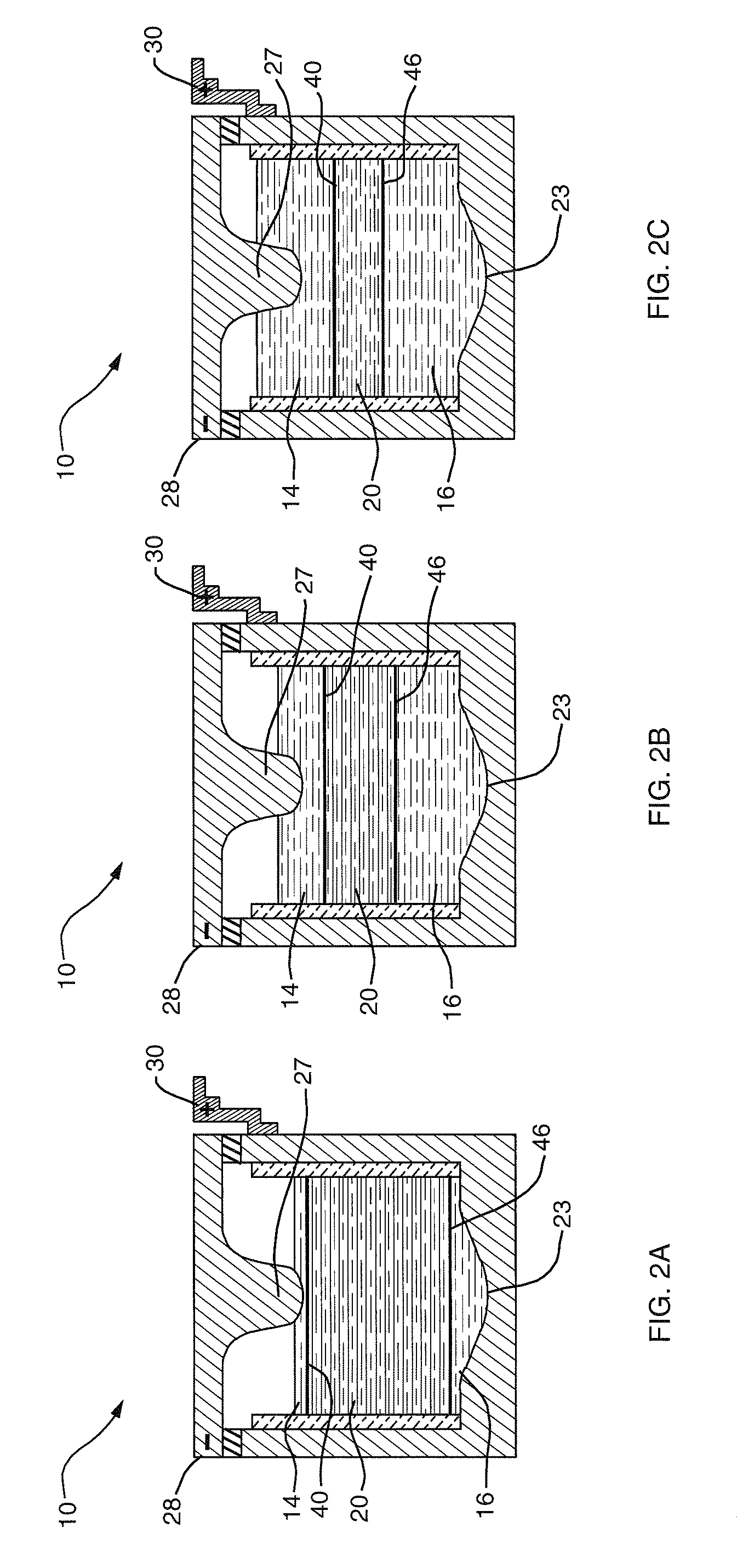High-amperage energy storage device with liquid metal negative electrode and methods
a technology of negative electrode and high-amperage energy storage, which is applied in the direction of non-aqueous electrolyte cells, cell components, sustainable manufacturing/processing, etc., can solve the problems of suboptimal management of electrical energy, negative environmental impact of suboptimal electrical energy management, and imbalance of supply, etc., and achieves large power capacity and scalable
- Summary
- Abstract
- Description
- Claims
- Application Information
AI Technical Summary
Benefits of technology
Problems solved by technology
Method used
Image
Examples
Embodiment Construction
[0034]The deployment of high-amperage electrical energy storage equipment, capable of rapidly receiving and dispatching electricity, could play a revolutionary role in addressing the market and societal impacts of supply-demand mismatch. However, a single storage technology adaptable to assorted needs along the distribution trajectory has been elusive. Although details vary according to the individual application, the features desirable in an electrical energy storage technologies for addressing large-scale supply and demand variabilities include the following: physical footprint smaller than about 100 m2 / MW; robustness with respect to movement and changes in environment; cycle life greater than 3000 deep discharge cycles; lifespan of 10 to 15 years; DC-to-DC efficiency of about 75% to 85%; power capacity from about 10 kW to greater than 10 MW; discharge capacity from about 4 to 10 hours; response time less than 100 ms; minimal maintenance; zero noise and zero emissions.
[0035]The fi...
PUM
| Property | Measurement | Unit |
|---|---|---|
| operating temperature | aaaaa | aaaaa |
| operating temperature | aaaaa | aaaaa |
| current density | aaaaa | aaaaa |
Abstract
Description
Claims
Application Information
 Login to View More
Login to View More - R&D
- Intellectual Property
- Life Sciences
- Materials
- Tech Scout
- Unparalleled Data Quality
- Higher Quality Content
- 60% Fewer Hallucinations
Browse by: Latest US Patents, China's latest patents, Technical Efficacy Thesaurus, Application Domain, Technology Topic, Popular Technical Reports.
© 2025 PatSnap. All rights reserved.Legal|Privacy policy|Modern Slavery Act Transparency Statement|Sitemap|About US| Contact US: help@patsnap.com



